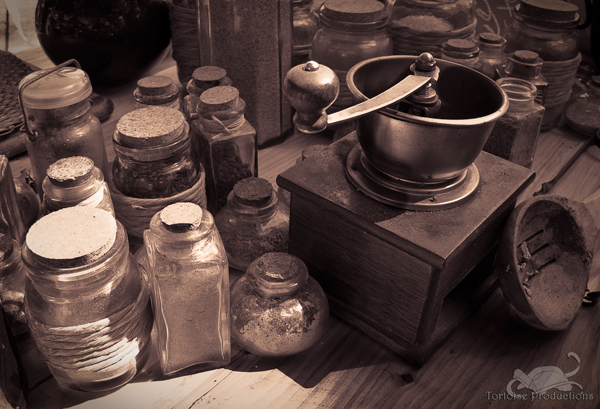Throughout the centuries, families along the Silk Road, would use the spices they had access to in order to create their own spice blends. Each family could control the amount of heat or sweetness based on the different combinations of the spices. Those that wanted heat, would have more peppers and those that wanted a sweeter blend, would have more cinnamon, etc.
Below are two recipes of two different spice blends popular among various cultures: Garam Masala and Curry. The first set is Alice the Cook’s Recipes and the other is that of her assistant, Nicholas Childs, an accomplished cook in his own right. They are very easy to do and provide a different tast of those spice blends found pre-prepared in jars. I hope you like them.
Alice’s Garam Masala
1 tsp Cinnamon sticks, broken into smaller pieces
1 tsp Caradamom pods (green, black, or brown)
1 tsp Ginger, dried and cracked
1 tsp Coriander seeds
1 tsp Techillacherry black peppercorns
1 tsp Cumin seeds
1 tsp Dried chili peppers
Alice’s Curry
1 tsp sea salt
1 tsp mustard seeds
1 tsp turmeric
1 tsp garam masala
2 tsp coriander, ground
2 tsp garlic, minced
2 tsp ginger, dried and cracked (preferred) ground is also acceptable
2 tsp cumin seeds
Nicholas’ Curry
1/2 t chili powder
1 t black mustard seed
1 t tumeric
2 t ground cumin
2 t ground corriander
2 t minced garlic
2 t ground or grated ginger( fresh or not)
2 t ajwian/cumin/caraway
Nicholas’ Garam Masala:
cumin
coriander
black pepper
cardamom
chilies
cloves
cinnamon
nutmeg grated
Additional Equipment
Mortar and pestle
Spice grinder
Instructions for both
Heat up a cast iron skillet so that it is quite hot and add the spices in order to dry roast them together. Once toasted, remove the spice mixture off of the heat and add them to the mortar and pestle to begin breaking the spices down for easier grinding. Once broken down, you can continue grinding them in the mortar and pestle, or you may use a spice or coffee grinder to combine the spices into a finer blend.
Place the spice blend into an airtight jar, the spices will keep their flavor for six months.



